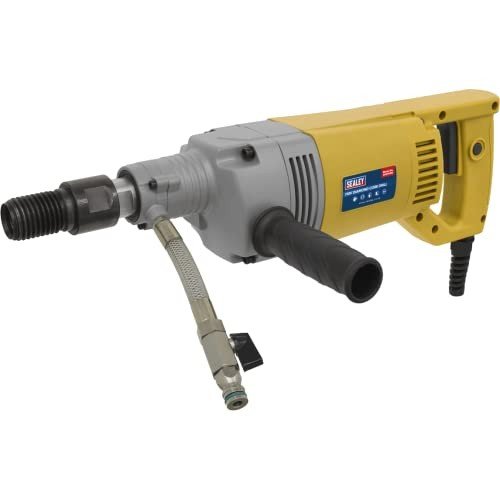
Electric Mitre Saw
Add a review FollowOverview
-
Posted Jobs 0
-
Viewed 3
Company Description
The 9 Things Your Parents Taught You About Mitersaw
The Essential Guide to Miter Saws: Understanding, Choosing, and Using the Perfect Tool
Introduction
Miter saws are essential tools in the toolbox of both amateur and professional woodworkers. These versatile devices permit users to make accurate crosscuts and angled cuts, making them ideal for a variety of woodworking jobs, from framing to cabinets. In this detailed article, we will dig into the world of miter saws, covering their types, features, and key factors to consider when choosing one. We’ll likewise respond to some regularly asked concerns, ensuring that readers are fully equipped to make informed decisions.
What is a Miter Saw?
A miter saw is a power tool that features a circular blade and is utilized for making precise crosscuts and miters at various angles. The saw is generally installed on a hinged arm that permits the user to reduce the blade down onto the workpiece, making the cutting process efficient and exact.

Key Components of a Miter Saw
| Blade | Circular cutting blade, offered in various sizes. |
| Base | The flat surface that supports the workpiece. |
| Miter Gauge | Adjustable mechanism to set the angle of cuts. |
| Bevel Adjustment | Permits angled cuts along the vertical aircraft. |
| Fence | The guiding edge that keeps wood steady throughout cutting. |
Kinds Of Miter Saws
There are a number of kinds of miter saws, each developed for specific cutting needs. Below is a comparison of the most typical types:
| Standard Miter Saw | Basic design, ideal for making fast crosscuts and miter cuts. | Small jobs and light-duty jobs. |
| Compound Miter Saw | Can tilt in one direction for beveled cuts, suitable for intricate jobs. | Crown molding, wood frames, etc. |
| Sliding Compound Miter Saw | Offers sliding abilities; permits broader cuts. | Bigger pieces, thicker products. |
| Dual-Double Bevel Miter Saw Miter Mitre Saw | Can tilt in both instructions, making it flexible. | Experts who deal with intricate angles. |
Choosing the Right Miter Saw
When it concerns choosing the best miter saw, a number of elements enter into play:
- Cutting Capacity: Consider the size of materials you prepare to deal with. Sliding miter saws usually offer larger cutting capacity.
- Angle Adjustment: Look for functions like Double Bevel Miter Saw bevels and accurate angle settings if your work demands intricate cutting.
- Mobility: If you require to move your saw regularly, consider the weight and design of the design.
- Power: Thicker materials require more power; a greater amperage motor is more suitable for such jobs.
Features to Consider
When evaluating miter saws, the following functions can significantly boost your cutting experience:
| Laser Guide | Projects a line on the workpiece for increased precision. |
| Electric Brake | Stops the blade rapidly for improved security. |
| Dust Collection | Keeps your workspace clean and enhances visibility. |
| User-Friendly Controls | Intuitive settings that simplify changes. |
Safety Tips for Using a Miter Saw
Security ought to always be a top concern when operating any power tool. Here are some necessary safety pointers:
- Wear Safety Gear: Always use security glasses and ear defense.
- Check Your Workpiece: Ensure there are no foreign objects in the cutting course.
- Secure Your Work: Use secures or a vice to hold the workpiece consistent.
- Do Not Overreach: Keep a stable position by positioning yourself correctly.
Upkeep Tips for Miter Saws
To guarantee that a miter saw runs efficiently and lasts long, routine upkeep is vital. Here are some suggestions:
- Keep the Blade Sharp: Dull blades can produce friction and damage the product.
- Clean the Saw Regularly: Remove dust build-up and particles, specifically from the blade and mitersaw motor.
- Inspect the Alignment: Periodically validate that the blade is aligned accurately to make sure precision.
- Oil Moving Parts: Apply maker oil on the moving parts to decrease friction.
FAQ Section
1. Can a miter saw cut through thick wood?
Yes, but ensure you choose a saw with the proper cutting capability and a sharp blade.
2. What size miter saw do I need?
The size depends upon your tasks. A 10-inch saw is perfect for most enthusiasts, while a 12-inch saw can manage larger boards and thick materials.
3. Is it safe to use a miter saw alone?
It is generally safe to use a miter saw alone, but guarantee you follow all safety guidelines and maintain a clear workspace.
4. How can I extend the life of my miter saw?
Routine upkeep, like cleaning and honing the blade, along with appropriate storage, will assist extend its lifespan.
5. What’s the difference between a compound miter saw and a sliding compound miter saw?
A compound miter saw can make beveled cuts in one direction, while a sliding compound miter saw has a sliding function to enable broader cuts.
Miter saws are essential tools that can raise the quality and performance of woodworking jobs. Comprehending the various types, features, and precaution can assist both newbies and seasoned specialists make notified decisions. With routine upkeep and proper use, a miter saw can show to be an important addition to any workshop, guaranteeing clean and accurate cuts each time. Whether you’re framing a home or crafting intricate moldings, the best miter saw will help you achieve your vision with ease and precision.
